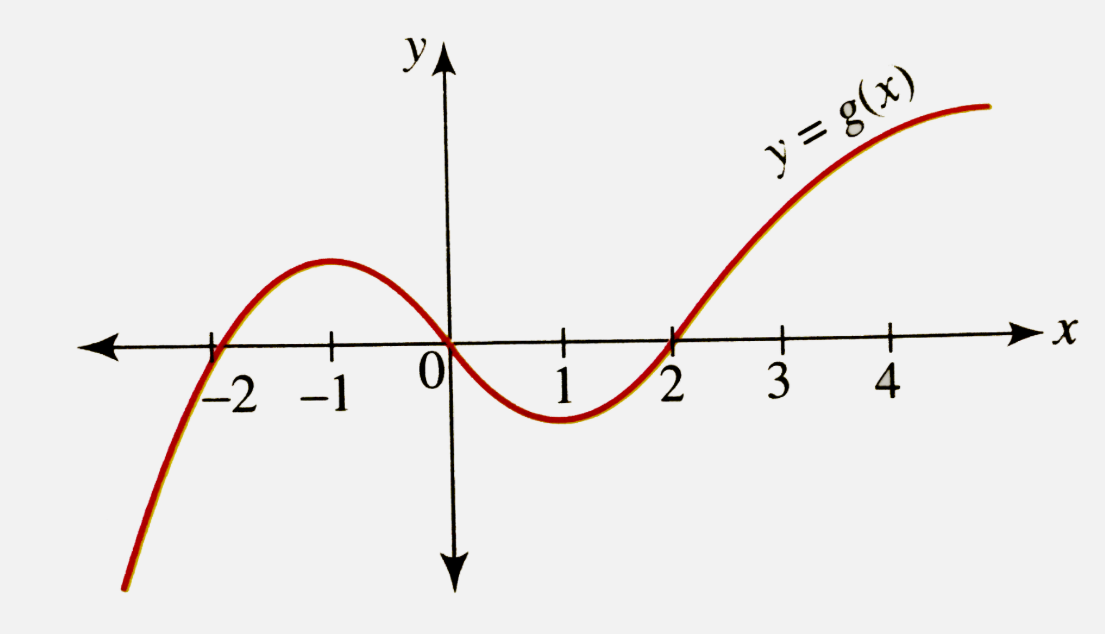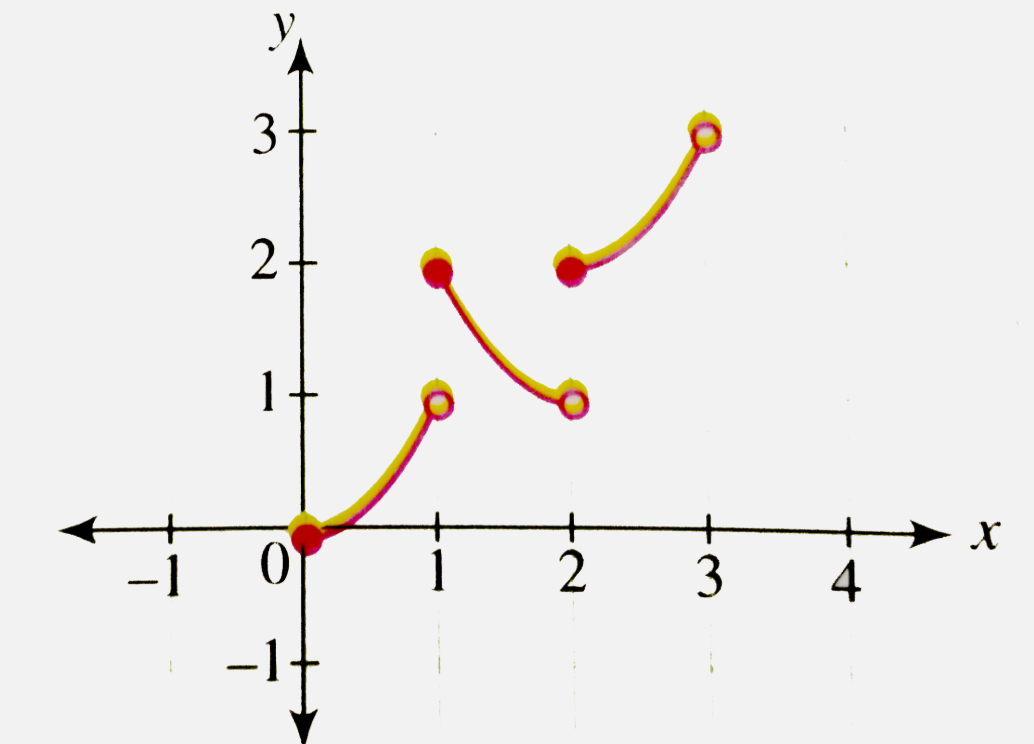For the function g whose graph is given. Arrange the following numbers in increasing order and explain your reasoning.
g(0),g'(−2),g'(0),g'(2),g'(4)
 Solution in Tamil
Solution in Tamil

From the graph, the value of f(0) = 0.
Also tangent to y=g(x) atx=0 makes an obtuse angle with the positive x - axis, hence g'(0)<0.
The measure of acute angle of inclination with the positive x - axis for tangent at x=−2,x=2,x=4 is in decreasing order.
Hence g'(−2),>g'(2)>g'(4).
Thus, values in increasing order are g'(0)<g(0)<g'(4)<g'(2)<g'(−2).
Topper's Solved these Questions
- BOOK - CENGAGECHAPTER - GETTING STARTED WITH GRAPHSEXERCISE - Exercise18videos
GETTING STARTED WITH GRAPHS
- BOOK - CENGAGECHAPTER - FUNCTIONSEXERCISE - Question Bank21videos
FUNCTIONS
- BOOK - CENGAGECHAPTER - GRAPH OF INVERSE TRIGONOMETRIC FUNCTIONSEXERCISE - Exercise18videos
GRAPH OF INVERSE TRIGONOMETRIC FUNCTIONS
Similar Questions
Does the following graph pass the vertical or horizontal line test ?
 View Solution
View SolutionIf there are four distinct real numbers satisfying thẻ equation ∣∣x2−4x−7∣∣=n, then number of integers in the range of n is
06:07View SolutionDraw the graph of y=tan−1x+cot−1x
02:11View SolutionFor the function g whose graph is given. Arrange the following numbers in increasing order and explain your reasoning.
g(0),g'(−2),g'(0),g'(2),g'(4)
 01:31View Solution
01:31View SolutionWhich of the following are correct chain isomers of butane ? (i)
02:45View SolutionDetermine the point of symmetry of a regular hexagon.
02:17View SolutionDtermine the images of the following figure about the given line :
05:41View SolutionMatch the following Column A to Column B
 02:10View Solution
02:10View SolutionMatch the following Column A to Column B
 02:17View Solution
02:17View SolutionMatch the following Column A to Column B
 02:10View Solution
02:10View SolutionThe inequation represented by the graph given below is :
04:23View SolutionThe inequation that best describes the graph given below is _________
01:50View SolutionThe inequation that best describes the following graph is _________
02:50View SolutionWhich inequations represent the shaded region in the given figure
02:34View SolutionAt x=0, value of (dy)/(dx) is : ltimg src="https://d10lpgp6xz60nq.cloudfront.net/physics_images/ALN_PHY_R04_E01_024_Q01.png" width="80%"gt
02:40View Solution

